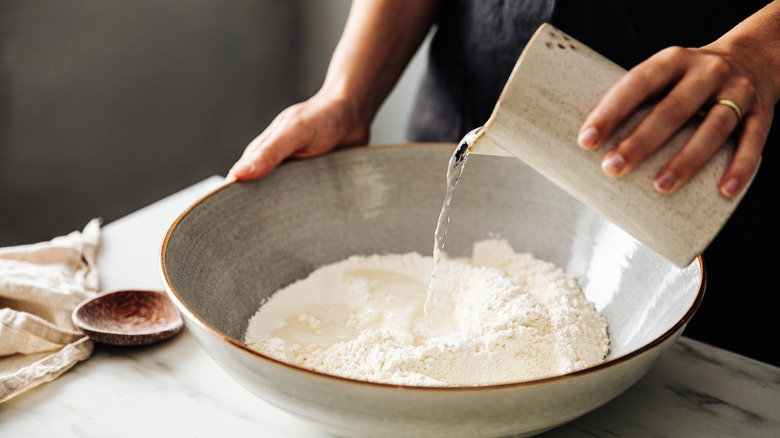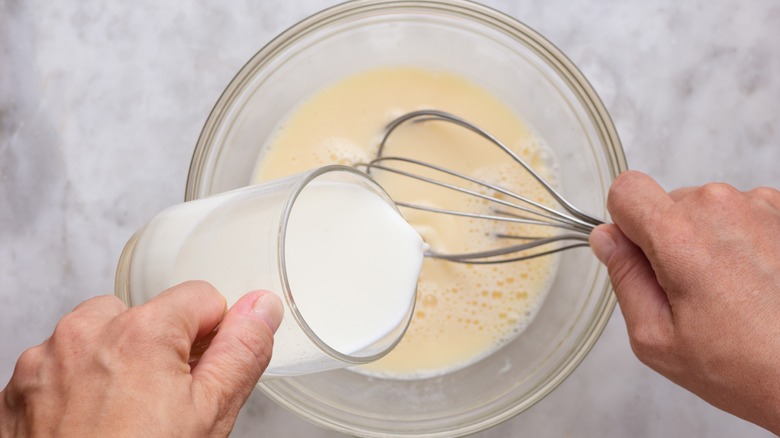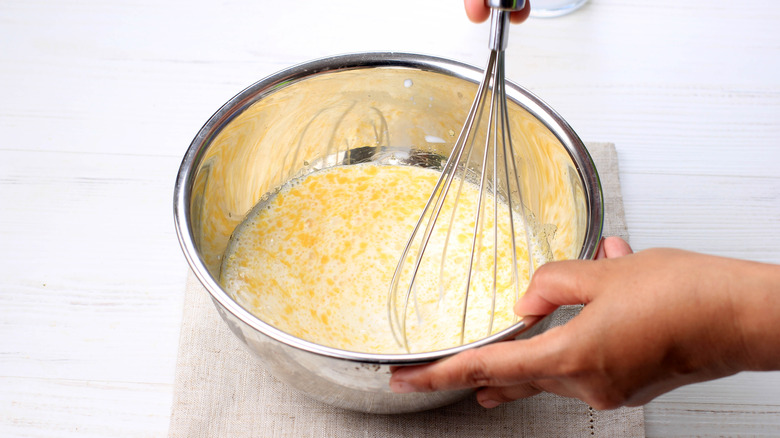How To Choose The Right Mixing Bowl Depending On What You're Cooking
You may have never thought too hard about the shape of your mixing bowls, but ask any chef and they'll tell you that it makes a huge difference depending on the task. Choosing the right bowl shape can make your prep work a lot easier, and help you achieve professional results. There are probably many thousands of different kinds of mixing bowls on the market, and many with all kinds of different customizations like skid-proof coating and matching lids, but the best bowls for serious cooks are actually very simple and typically inexpensive. Before you go bowl shopping, take some time to learn what shapes are best for cooking and baking so that you can invest your kitchen dollars in equipment that you'll actually use instead of taking up space in a cabinet.
When you go to the kitchen store to shop for bowls, remember that you'll be using them for all different applications and recipes. There are many different volumes, however the most common sizes in the United States are 8 quarts, 4 quarts, and 3 quarts, and often they're sold together in sets. While it's tempting to get one set of bowls and call it good, you should actually either buy two sets, or shop for your bowls individually, because you'll need some with tall sides and some that are shallow and short.
Tall and narrow, wide and shallow
Tall, narrow shaped bowls with high sides are good for baking because you can add wet to dry ingredients without all the flour puffing out all over the counter while you're folding things together. If you have a stand mixer, that is why the bowl is shaped with high sides. Batter bowls with measurements on the side with handles also fall into this category. Tall bowls are also good for allowing yeast dough to rise in the same bowl you mixed the ingredients, like focaccia, without everything spilling out.
Savory recipes, on the other hand, rely a lot on wide, shallow bowls, because it's simply easier to get your hand or tools into the body of the bowl and mix things around. For instance, it's very difficult to get enough surface area in a narrow bowl when you're whipping cream or egg whites with a balloon whisk. It's also more challenging to mix up large quantities of something like pasta salad. What happens is that the bottom of whatever you're mixing doesn't get incorporated as well because in a narrow bowl it's harder to get a spoon or spatula underneath all the ingredients to toss things around.
Buying sets or individual bowls
If you cook a lot, have plenty of space, and need lots of bowls, two sets of bowls might make the most sense — just make sure one set is tall and narrow, and the other wide and shallow. If space is limited, however, buy your bowls individually.
When it comes to materials, most chefs prefer to use mostly stainless steel bowls because they're lightweight, don't break or chip, and they can go on a stovetop, over a double boiler, or in the oven. However, it's good to have a couple of ceramic and plastic bowls in the mix for the few places metal bowls can't go, especially the microwave.
Also, just because you have a big family doesn't mean you should skip out on buying little bowls. A set of small ingredient bowls as well as a few small mixing bowls that hold just a pint or two are really helpful for single egg or for gathering mise en place. This will cut down on the wear and tear on your soup and cereal bowls.
Most chefs will agree that you can never have enough bowls. Just be sure to have a few different shapes and sizes in your toolkit and you'll have a much easier time mixing and tossing whatever comes your way in the kitchen.


